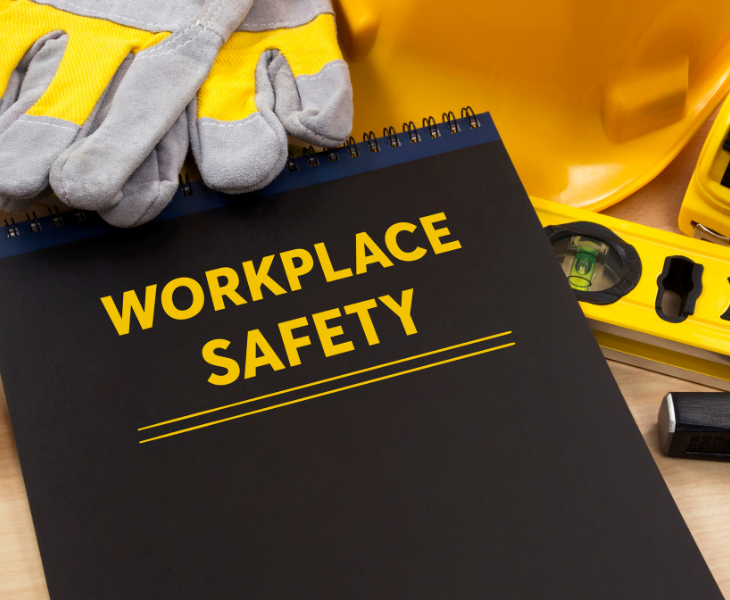Personal Protective Equipment (PPE) is a critical part of workplace safety, particularly in industries where employees are exposed to various hazards. However, even the highest quality PPE can fail if not used correctly. Common PPE mistakes such as improper fit, poor maintenance, or selecting the incorrect type of gear can undermine safety measures and increase the risk of injuries. For any business, understanding and avoiding these errors are essential for ensuring a safe and compliant work environment.
1. Improper Fit of PPE
One of the most common mistakes in using PPE is an improper fit. Loose gloves can reduce dexterity and increase the likelihood of cuts, while an ill-fitting respirator may not provide adequate protection against inhaling harmful dust or fumes.
How to Avoid: Provide PPE that is available in a range of sizes to accommodate all employees. Fit testing, particularly for respiratory masks, is crucial to ensure a proper seal and effective protection.
2. Poor Maintenance and Lack of Regular Inspections
PPE requires regular maintenance and inspection to still be effective. Depending on the industry and the gear, some PPE
even require frequent replacing. Helmets can become brittle over time, gloves can develop holes, and respirators can lose their filtering capability. Neglecting to inspect PPE for wear and tear or not maintaining it according to manufacturer
guidelines can lead to its ineffectiveness.
How to Avoid: Implement a regular inspection and maintenance schedule for all PPE. This includes checking for signs of damage and ensuring that components like filters and seals are replaced as needed.
3. Selecting the Wrong Type of PPE
Using the wrong type of PPE for a specific task is a significant risk that can lead to serious injuries. Using general-purpose gloves isn’t ideal for handling chemicals. Wearing regular eyewear instead of safety glasses can leave eyes unprotected from splashes or debris. This mistake often occurs when there is a lack of understanding of the specific hazards present in the workplace.
How to Avoid: Conduct a thorough risk assessment to identify all potential hazards in the workplace and determine the proper PPE for each task. Ensure that the selected PPE meets Australian standards for the specific hazards it is intended to protect against.
4. Inadequate Training
Even with the right PPE, if employees do not know how to use it properly, it will not provide the intended protection. A common issue is assuming that employees understand how to correctly wear, adjust, and maintain their PPE without formal training. This can lead to incorrect usage, such as not securing straps properly, not replacing disposable PPE when needed, or using damaged equipment.
How to Avoid: Provide comprehensive training on the correct use of PPE, including how to wear it, how to check for damage, and how to store it properly. Training should be part of the onboarding process for new employees and regularly refreshed to ensure that all workers remain knowledgeable.
5. Ignoring Comfort and Usability Issues
While safety is the primary concern, comfort and usability also play crucial roles in using PPE. Uncomfortable PPE can lead to non-compliance, with workers either not wearing it at all or removing it during their tasks.
How to Avoid: Involve employees in the selection process of PPE to ensure that the equipment is not only safe but also comfortable for daily use. Consider ergonomics and climate when choosing PPE—lightweight, breathable materials can make a significant difference in compliance. Employers should also encourage feedback from workers on the comfort and functionality of PPE.
6. Failure to Replace PPE When Necessary
PPE has a finite lifespan and using it beyond its intended period of effectiveness is a common mistake that can compromise safety. Whether due to cost-saving measures or simply oversight, extending the use of PPE such as worn-out gloves, expired respirators, or faded high-visibility clothing is a risk that can lead to injuries or exposure to hazards.
How to Avoid: Establish clear policies on the lifespan and replacement schedule of all PPE. Ensure that employees are aware of these policies and know when and how to request replacements. Keep an inventory of PPE and monitor its usage to anticipate when replacements will be needed. Employers should also consider bulk purchasing to ensure that replacement stock is always available.
7. Overlooking the Importance of PPE Compatibility
Compatibility issues can arise in workplaces where multiple types of PPE are required. For example, wearing a helmet
may interfere with the fit of ear protection, or safety glasses may not fit well under a respirator. These issues can lead to
reduced effectiveness of one or both pieces of equipment, increasing the risk of injury.
How to Avoid: Consider how different types of equipment will be used together. Some manufacturers design PPE systems with compatibility in mind, so it may be beneficial to select equipment from the same provider. Testing the
combined PPE in real work scenarios can help identify and resolve any compatibility issues before they become a problem.
Avoiding common PPE mistakes is crucial in maintaining a safe and compliant workplace. By addressing these errors,
businesses can safeguard their employees and foster a culture of safety that benefits everyone.

